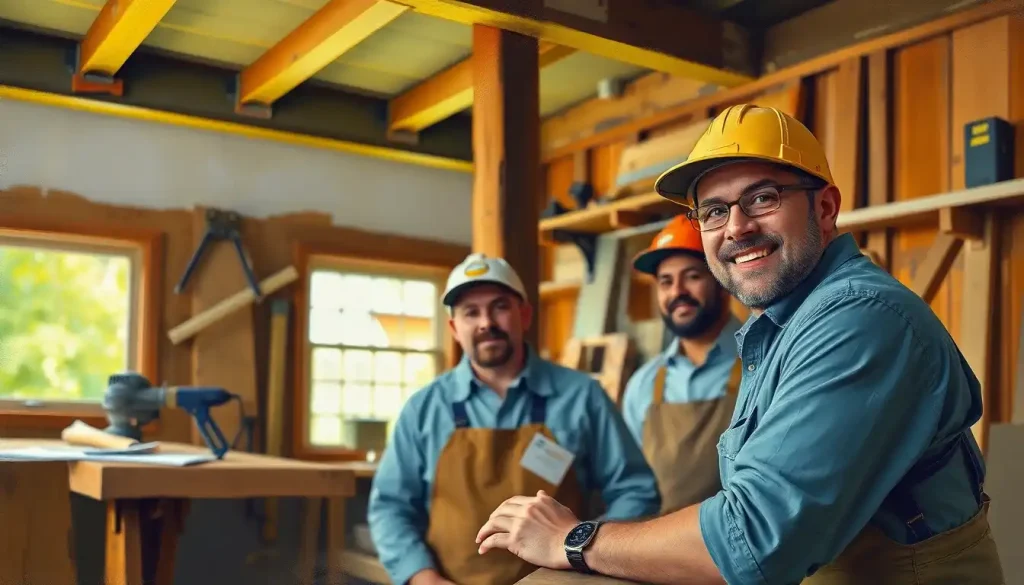As parents, we’re constantly juggling financial decisions, but few are as crucial as choosing the right savings vehicle for our children’s future. The world of child savings can be a maze of options, each with its own set of rules, benefits, and potential pitfalls. Two popular choices that often come up in conversation are Child Trust Funds (CTFs) and Junior Individual Savings Accounts (Junior ISAs). But what exactly are these, and how do they stack up against each other?
Let’s dive into the nitty-gritty of these savings options, exploring their histories, features, and the all-important question of whether you should consider transferring from a CTF to a Junior ISA. By the end of this article, you’ll be equipped with the knowledge to make an informed decision about your child’s financial future.
A Brief History Lesson: The Rise and Fall of Child Trust Funds
Cast your mind back to the early 2000s. The UK government, in a bid to encourage long-term savings for children, introduced Child Trust Funds. These savings accounts were available for children born between September 1, 2002, and January 2, 2011. The government kickstarted each account with a £250 voucher (or £500 for low-income families), with an additional top-up when the child turned seven.
The idea was simple: create a tax-free savings pot that would grow over time, giving children a financial head start when they turned 18. Parents, family, and friends could contribute up to a certain amount each year, and the funds could be invested in cash savings or stocks and shares.
However, as with many well-intentioned government schemes, CTFs had their drawbacks. The financial crisis of 2008 put pressure on public finances, and in 2011, the government decided to phase out CTFs in favor of a new savings vehicle: the Junior ISA.
Enter the Junior ISA: A New Era of Child Savings
Junior ISAs burst onto the scene in November 2011, offering a more flexible alternative to CTFs. Like their predecessors, Junior ISAs provide a tax-efficient way to save for a child’s future. But they come with some key differences that make them an attractive option for many parents.
One of the most significant advantages of Junior ISAs is the wider range of providers and investment options available. This increased competition often translates to better interest rates and lower fees for savers. Additionally, Junior ISAs typically offer more flexibility in terms of switching between providers and investment types.
But here’s the kicker: children couldn’t have both a CTF and a Junior ISA. This created a bit of a conundrum for parents with existing CTFs. Should they stick with what they know, or make the switch to this new savings vehicle?
The Great Debate: Child Trust Fund vs. Junior ISA
Now that we’ve set the stage, let’s dive into the nitty-gritty of these two savings options. Understanding the key features and benefits of each will help you make an informed decision about which is best for your child’s financial future.
Child Trust Funds come in three flavors:
1. Cash CTFs: These work like regular savings accounts, earning interest on the money deposited.
2. Stakeholder CTFs: These invest in stocks and shares, with a mix of investments that changes as your child gets older to reduce risk.
3. Shares-based CTFs: These allow you to choose which companies or investment funds to invest in.
Each type has its own set of pros and cons. Cash CTFs offer the security of guaranteed returns, but these may be outpaced by inflation over time. Stakeholder and shares-based CTFs have the potential for higher returns, but also come with more risk.
Child Trust Fund interest rates can vary widely depending on the type of fund and the provider. It’s crucial to shop around and compare rates to ensure you’re getting the best deal for your child.
On the other hand, Junior ISAs come in two main types:
1. Cash Junior ISAs: Similar to cash CTFs, these earn interest on savings.
2. Stocks and Shares Junior ISAs: These invest in the stock market, offering potential for higher returns but with increased risk.
Junior ISAs often boast higher interest rates and lower fees compared to CTFs, thanks to increased competition among providers. They also offer more flexibility in terms of switching between providers and investment types.
The Transfer Tango: Moving from CTF to Junior ISA
If you’re considering making the switch from a CTF to a Junior ISA, you’re not alone. Many parents have found the benefits of Junior ISAs compelling enough to make the transfer. But before you jump in, it’s important to understand the process and potential implications.
First things first: eligibility. Any child born between September 1, 2002, and January 2, 2011, who has a CTF, is eligible to transfer to a Junior ISA. The process is relatively straightforward, but it does require some paperwork and patience.
Here’s a quick step-by-step guide to transferring a Child Trust Fund to a Junior ISA:
1. Choose a Junior ISA provider: Research different providers to find the best rates and investment options for your needs.
2. Open a Junior ISA: You’ll need to provide your child’s details and your own.
3. Request a transfer: Your new Junior ISA provider will give you a transfer form to complete.
4. Wait for the transfer: This can take up to 30 days for cash transfers, or longer for stocks and shares.
It’s important to note that you can’t partially transfer a CTF to a Junior ISA. It’s an all-or-nothing deal. Also, once you’ve made the transfer, you can’t switch back to a CTF.
Weighing the Pros and Cons: CTF vs. Junior ISA
Now that we’ve covered the basics, let’s dive into a more detailed comparison of CTFs and Junior ISAs. This will help you make an informed decision about which option is best for your child’s financial future.
Investment Flexibility:
Junior ISAs generally offer more investment options and flexibility compared to CTFs. With a Junior ISA, you can choose from a wider range of providers and investment funds, potentially allowing for better returns.
Fee Structures:
CTFs, particularly stakeholder CTFs, often have higher fees compared to Junior ISAs. This is partly due to the regulations around CTFs, which require certain features that can increase costs. Junior ISAs, with their more competitive market, often have lower fees, which can make a significant difference to the overall returns over time.
Contribution Limits:
Both CTFs and Junior ISAs have annual contribution limits. For the 2021/2022 tax year, the limit for both is £9,000. However, Junior ISAs often offer more flexibility in how these contributions can be split between cash and stocks and shares options.
Long-term Growth Potential:
While both CTFs and Junior ISAs offer tax-free growth, the potentially lower fees and wider investment options of Junior ISAs could lead to better long-term growth. However, it’s important to remember that past performance doesn’t guarantee future results, especially when it comes to stocks and shares investments.
Making the Big Decision: To Transfer or Not to Transfer?
Deciding whether to stick with your Child Trust Fund or make the switch to a Junior ISA is a personal decision that depends on your individual circumstances. Here are some factors to consider:
1. Current CTF performance: If your CTF is performing well and has competitive fees, there may be less incentive to switch.
2. Investment goals: If you’re looking for more diverse investment options, a Junior ISA might be more suitable.
3. Fees: Compare the fees of your current CTF with potential Junior ISA options. Lower fees can make a significant difference over time.
4. Ease of management: Some parents find Junior ISAs easier to manage and switch between providers.
It’s worth noting that financial experts often recommend considering a transfer to a Junior ISA, particularly for those with stakeholder CTFs. The potential for lower fees and better investment options can make a significant difference over the long term.
Busting Myths: Common Misconceptions about CTFs and Junior ISAs
As with any financial product, there are several myths and misconceptions surrounding CTFs and Junior ISAs. Let’s clear up a few:
Myth 1: “CTFs always have better interest rates because of the government contribution.”
Reality: While CTFs did benefit from initial government contributions, Junior ISAs often offer more competitive interest rates due to increased market competition.
Myth 2: “You can’t transfer a CTF to a Junior ISA.”
Reality: Since April 2015, it has been possible to transfer CTFs to Junior ISAs.
Myth 3: “Junior ISAs are always better than CTFs.”
Reality: While Junior ISAs often offer advantages, it depends on individual circumstances. Some CTFs may perform well and have competitive fees.
Looking Ahead: Accessing Funds at 18
Whether you choose to stick with a CTF or transfer to a Junior ISA, it’s important to remember that these savings vehicles are designed to mature when your child turns 18. At this point, the account will automatically convert to an adult ISA, and your child will gain control of the funds.
This is a crucial moment in your child’s financial journey. It’s important to start having conversations about money management early on, so they’re prepared to make wise decisions when they gain access to these funds.
For those with CTFs, it’s worth noting that accessing a Child Trust Fund at 18 may involve a slightly different process compared to a Junior ISA. Make sure you and your child are familiar with the steps involved well before their 18th birthday.
The Bottom Line: Securing Your Child’s Financial Future
When it comes to choosing between a Child Trust Fund and a Junior ISA, there’s no one-size-fits-all answer. Both options offer tax-efficient ways to save for your child’s future, and both have their own set of advantages and potential drawbacks.
If you currently have a CTF, it’s worth taking the time to review its performance and compare it with Junior ISA options. Consider factors such as interest rates, fees, investment options, and ease of management. Don’t be afraid to seek professional financial advice if you’re unsure.
Remember, the most important thing is that you’re taking steps to secure your child’s financial future. Whether through a CTF or a Junior ISA, regular saving and smart investing can give your child a significant financial head start in life.
As you navigate this decision, keep in mind that it’s not just about the numbers. It’s about setting your child up for financial success and instilling good money habits from an early age. Whichever option you choose, involve your child in age-appropriate discussions about saving and investing. This financial education can be just as valuable as the savings themselves.
In the end, whether you stick with a CTF or make the switch to a Junior ISA, you’re making a positive step towards your child’s financial future. And that’s something to be proud of.
References:
1. HM Revenue & Customs. (2021). “Junior Individual Savings Account (ISA) Statistics.” GOV.UK.
2. Money Advice Service. (2021). “Child Trust Funds.” moneyadviceservice.org.uk.
3. Which?. (2021). “Child trust funds explained.” which.co.uk.
4. Moneyfacts. (2021). “A guide to Junior ISAs.” moneyfacts.co.uk.
5. The Money Edit. (2021). “Child Trust Funds vs Junior ISAs.” themoneyedit.com.












Would you like to add any comments? (optional)